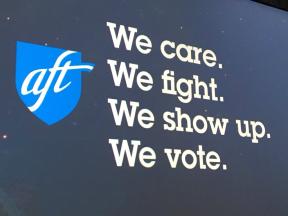My good friend and colleague Kim Kohlhaas, President of AFT-Wisconsin, shared a video with me from a TED Talk. https://www.ted.com/talks/derek_sivers_how_to_start_a_movement While watching the short 3 minute video I learned a valuable lesson, we need to start a movement in order to build a union.
Starting a Movement
I've been told plenty of times that I'm nuts to be a union president and that it's impossible to build a powerful union for public and higher education in Utah. Well I have to agree with the first statement, but I don't believe the second. No doubt it's difficult to unionize, but it

